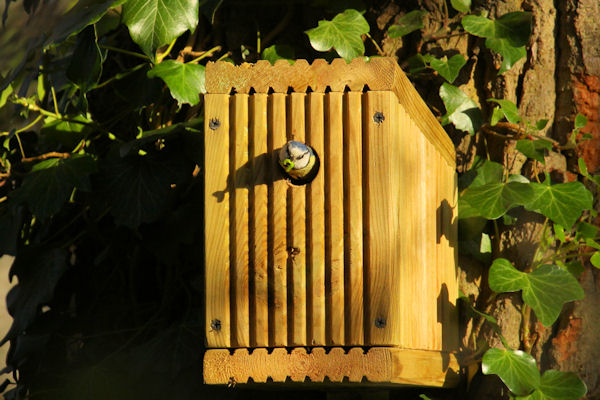May in Bicknor Wood - Part 2
There was just too much going on during the first two weeks of May that it would have been impossible to keep abreast of it in just one post. So May has been cut into two parts and the first can be seen here. The Bluebells almost made it through to the end of the month, but were plainly past their best by the last weekend. Please correct me if I am wrong, but I recall them wilting long before the end of May last year, but that was warm and dry as opposed to this year's wet and windy.
Ash and sweet chestnut trees have at last achieved a decent covering of leaf, with the ash greening up by 18th and the chestnut by 20th. Many ash seedlings have sprouted too.
Sadly, the Great Tits' nest at box 14 was abandoned and on 19th, the Blue Tits' nest at 8 was destroyed. To raise the mood a little, box 25 was found to be active with chicks already being fed. On 25th, box 17 was found to be supporting an active pair of Blue Tits feeding chicks, but they were no longer feeding 3 days later. Did they fledge? The pairs in boxes 1 and 5 continued to feed and fledging took place from box 1 on 26th. Box 5 fledged on 26th and box 25 on 27th. The fledging clearly thought it was a big ask!
Springwatch reported a decline in Blue Tit fledging this year. The co-ordinated appearance of oak leaves and Winter Moth was too late for the Blue Tits who had to forecast when they would need most food and try to align their chicks' hatching to take advantage of a glut. Sadly the late spring has foxed their predictions and social media has reported many blue Tits' nests failing. Perhaps we should consider it a success to have fledged 3 broods.
The Nuthatches were seen feeding chicks on 23rd, but by 24th the nest was quiet and fledging might be presumed.
The Great Spotted Woodpeckers have taken up residence in the old Nuthatch nest from last year. The chicks can be heard chuckling from inside the hole. Both parents are being very attentive, but are quite shy and are reluctant to approach the nest if observers are too close.
The damage caused by the woodpeckers on the other nest boxes coincides with the presence of very small Blue Tit chicks and lends more likelihood that the boxes were broken open to reach the treats inside.
A Mistle Thrush was seen indulging in peculiar behaviour on 17th. Some birds try to distract predators by appearing to be injured. The predator senses an easy meal and thus the danger is drawn away from the chicks. Despite never having heard of thrushes doing this, I suspect that she was distracting the Magpies away from the vicinity of her nest.
Giving in to presumption yet again, only male Blackcaps have been seen through the second half of May, leaving the suspicion that the females are brooding.
Broom was seen blooming on 17th, but judging by the profusion of yellow, I was slow in spotting it.















Comments
Post a Comment